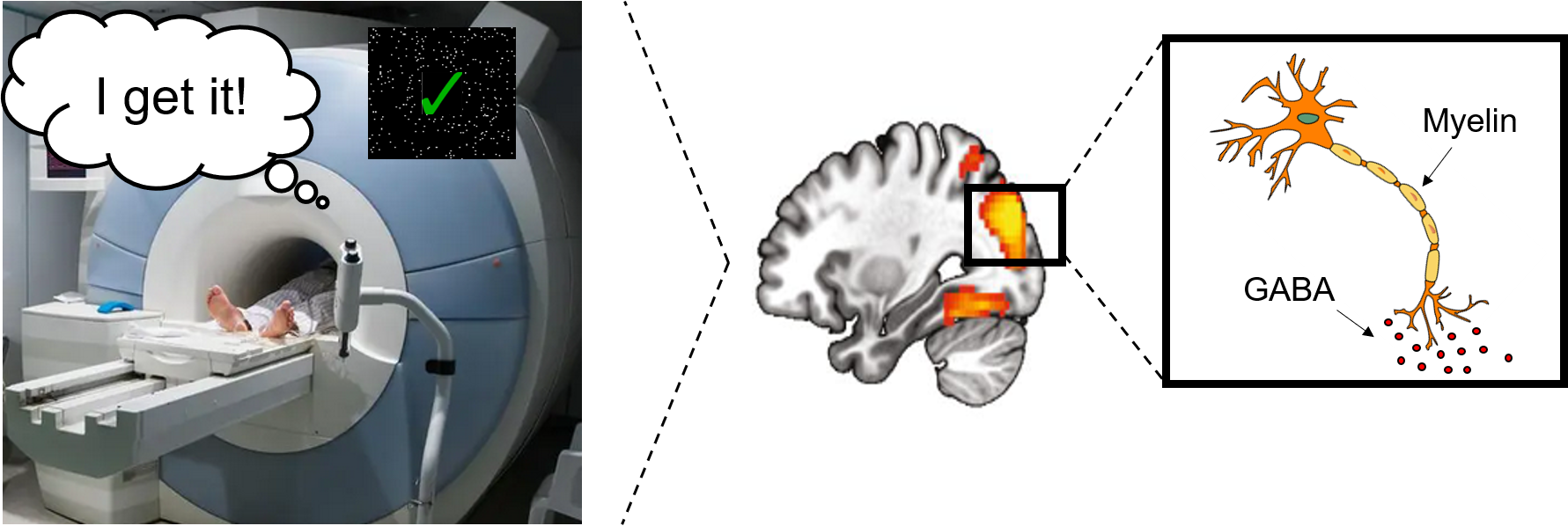Learning a new skill requires many hours of repetitive practice to refine and improve the behaviour. Understanding how such learning is encoded in the brain is critical to facilitating cognitive flexibility during old age and disease. However, the neural mechanisms that underpin extended learning remain largely mysterious.
We utilise multi-modal brain imaging to study the complex interaction between neurochemical and structural brain plasticity that occurs during extended learning. Using magnetic resonance spectroscopy, we can determine how the release of inhibitory and excitatory neurotransmitters is calibrated during the learning of a new skill. Thanks to recent advances in mutli-parameter brain imaging, we are able to relate these neurochemical changes to alternations in brain structure, including levels of ‘myelin’, a molecule that wraps around microscopic segments of neurons to increase their firing speed. By combining these measures with functional imaging brain-wide network activity, we can elucidate how these neurochemical and neuroanatomical alternations impact brain activity during learning.
We hope that by interrogating brain plasticity at multiple levels, we can shed new light on the complex neural mechanisms that underpin extended learning.


